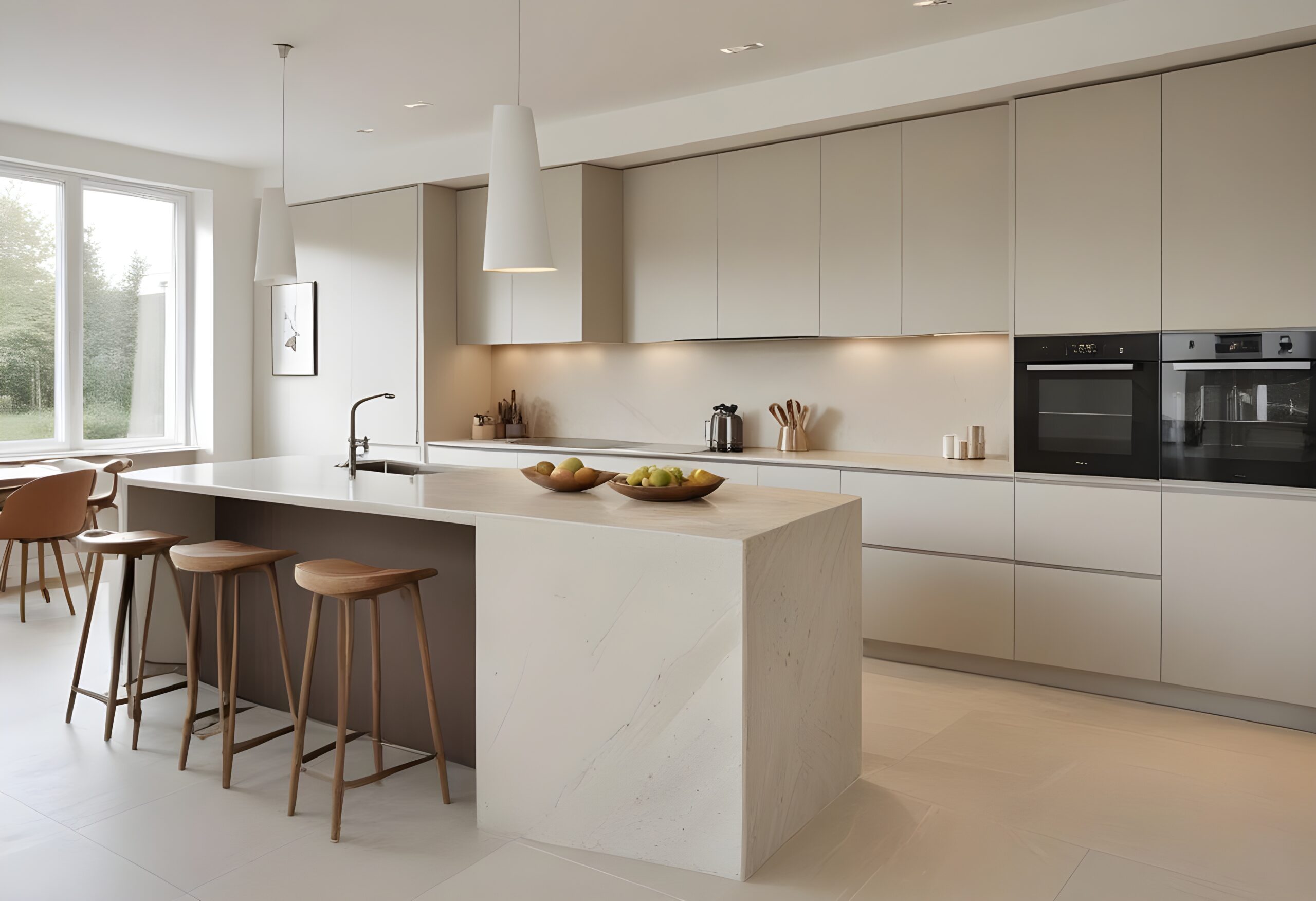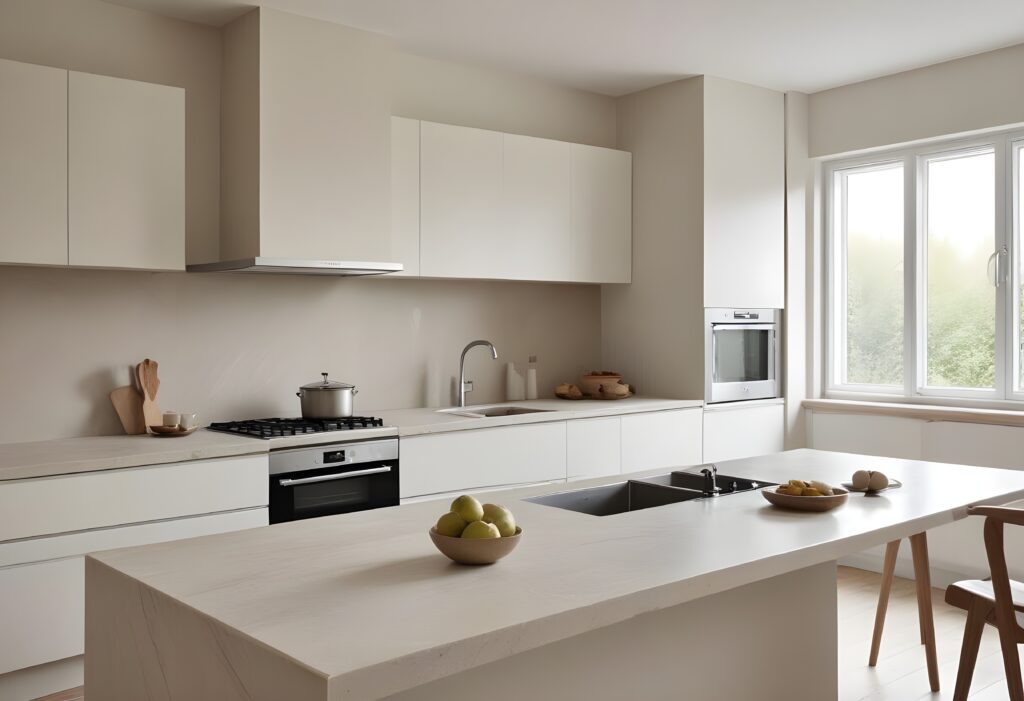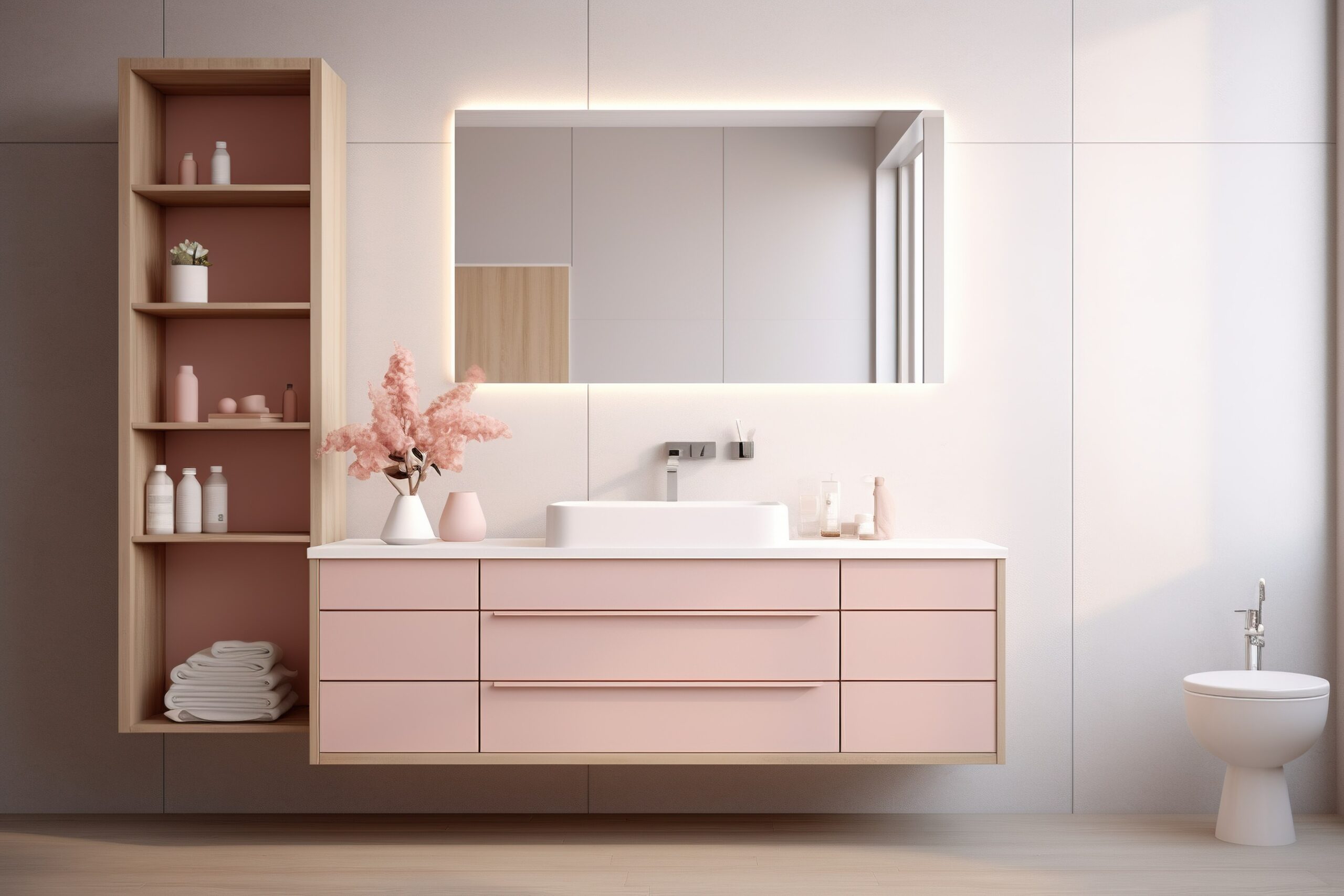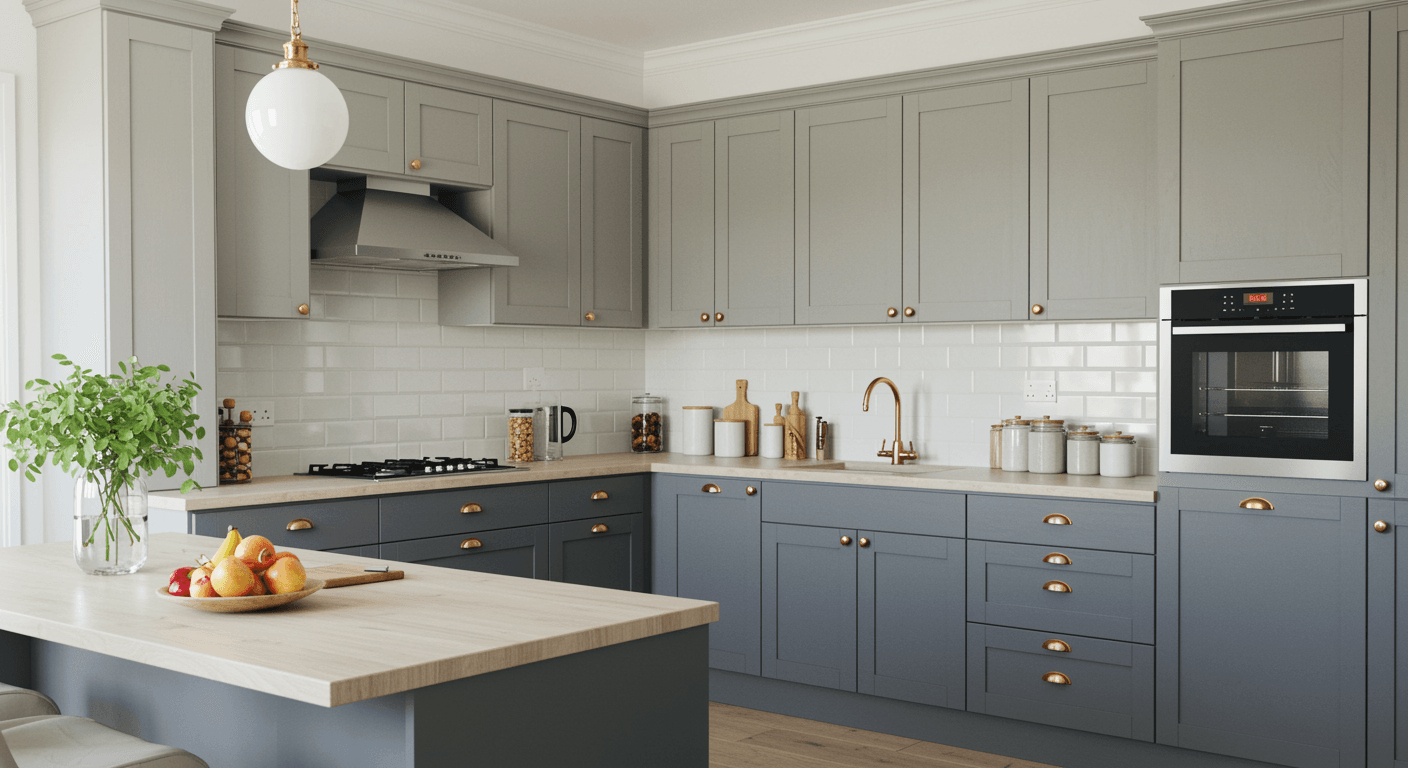Sintered stone countertops carry various different pros and cons when it comes to being used in the kitchen space. Here are 4 important aspects home owners should take note of before purchasing this material for their homes.
Pros
Sintered Stone Countertops #1: Low Maintenance

The most remarkable attribute of a sintered stone countertop is that it requires very minimal maintenance which makes it great for busy families or even commercial kitchens. The major advantages for sintered stone are the fact that it is non-porous by nature where liquids, oils and even other messes do not seep into the stone. Such resistance allows for simple cleaning of kitchen spills including wine, coffee and acidic substances, only with a cloth and some mild soap solutions.
Unlike many natural stone surfaces which must be resealed throughout the process of maintaining the aesthetics of the stone, sintered stone remains in its original and pristine state with minimal maintenance. It is resistant from scratches and heat while making sure to not leave any flaws on the surface even under regular use such as with sharp knives and hot pots. This quality means that it does not require any additional and special cleaning materials or protective accessories.
Second, sintered stone promotes a germ-free kitchen environment because of the element of non-porosity as it prevents the growth of bacteria or mould. This, makes it suitable for surfaces where food is prepared and cleanliness is crucial. It also does not require any harsh chemicals or abrasive cleaning tools which some other countertop materials may require.
With the combination of ease in cleaning, resistance to common kitchen hazards, and long-lasting durability, sintered stone becomes a great choice and solution that saves home owners both time and effort. The ability to guarantee beauty and functionality is a significant reason to its growing popularity.
Sintered Stone Countertops #2: Durability

Sintered stone countertops have high resistance, making them perfect for large and busy kitchens. The material is particularly designed to be very resistant to scratches; hence, everyday use with knives, utensils, and other kitchen tools will not damage its finish. It has very high resistance to heat — home owners can place hot pots and pans right on the countertop without fear of damaging the material. This constitutes a remarkable advantage over other countertop materials which can get stained or damaged under extremely high temperatures.
Besides, sintered stone is non-porous; therefore, it will not allow for the penetration of common kitchen products and substances such as liquids, preventing staining while also making the cleaning process much easier.
Sintered stone is highly resistant to impact, protecting it from chips and cracks in case of impact due to heavy objects. This makes the countertop well regarded in terms of maintaining its original structure and aesthetic value after several years. The other critical aspect of its durability pertains to the hygienic properties. There are no bacteria or mould growth and spread on the non-porous surface, proving this type of stone to be a very safe and sanitary choice for areas where food will be prepared. This feature is very instrumental to families and commercial kitchens where hygiene is of utmost priority.
One of the major benefits related to the durability of sintered stone is long-term savings. Sintered stone does not deteriorate easily or quickly; thus, helping home owners save money on the long run when it comes to repairs and replacement. Moreover, it can easily withstand abrasive cleaning products due to its resistant nature. In summary, the durability of sintered stone countertops brings a whole array of benefits that are shown in terms of strength and low maintenance for creating a superior surface for any kitchen space.
Cons
Sintered Stone Countertops #1: Cost

One of the most jarring drawbacks to sintered stone countertops is that they can be pretty expensive. They are generally of a higher price compared to other popular materials, for instance, laminate, solid surface and even some varieties of natural stone. The high cost comes from various aspects that are put into developing and manufacturing the material. This process not only guarantees the durability and resilience of the material but also requires specialised equipment and technology, hence increasing the cost of production.
Besides, sintered stone countertops have a sophisticated installation process which is labour-intensive — needing professional installers who have to be trained to handle its weight and hardness. The heavy nature of sintered stone slabs requires additional care and precision in their transportation and installation to prevent damage, further increasing the labour costs. Also, specialised tools and techniques in the installation process can raise the cost. This not only includes the cost of labour but also probable structural changes in the case of support for such heavy countertops particularly in older homes.
While the long-term benefits regarding strength and low maintenance may be worthwhile to many, it is actually the upfront cost that presents a problem. For budget-conscious homeowners or those who are renovating extensively, the high cost of sintered stone countertops may make them consider cheaper options that can still offer the same aesthetic appeal at a fraction of the price. Therefore, while sintered stone certainly comes with many pros, the significant financial investment home owners must make is definitely a major con against the pros.
Sintered Stone Countertops #2: Repair Options

One of the most noticeable disadvantages of sintered stone countertops is that they are very difficult to repair. While known for having exceptional durability and strength, that same hardness and density make repairing any damage exceptionally challenging. In comparison with materials such as laminate or solid surface that can be relatively easily patched or resurfaced, sintered stone is difficult to repair once there are chips, cracks, or scratches The techniques and equipment for the repair process are mostly specific in nature and in most cases, a professional is required. This not only complicates the repair but also increases the cost associated with the process.
Furthermore, certain repairs may require replacing the entire section of a countertop since slight damages might not perfectly blend with the remaining surface. This high degree of difficulty and expense of repairing stone issues can easily deter most home owners from installing sintered stone.
Moreover, it is not always easy to find a good technician to fix the countertops to the best possible standard; therefore, making it seem more like a hassle. Therefore, on the negative side, while sintered stone countertops promise very long life and high performance, there are limited options which also may be extremely costly when it comes to repairs and replacements.





